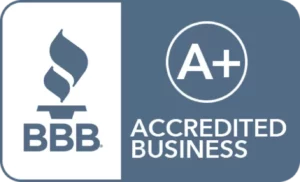Checkbook Control
The ability to invest retirement funds in a newly established special purpose entity that the IRA owns 100% of, and is managed by the IRA holder is legal by the Tax Court and IRS (Internal Revenue Service). It has been legal for over 18 years. However, only recently did the Tax Court confirm that the use of a newly established Limited Liability Company (LLC) an IRA (individual retirement account) completely owns and the IRA holder manages will not trigger a prohibited transaction.
On October 2013, the Tax Court in T.L. Ellis held that establishing a special purpose Limited Liability Company to make an investment did not trigger a prohibited transaction. A newly established LLC is not a disqualified person pursuant to Internal Revenue Code Section 4975. Therefore, the use of a Checkbook Controlled Self-Directed IRA LLC is perfectly legal.
Tax Court Confirms Validity of Self-Directed IRA LLC Solution
The legality of the Checkbook Control IRA structure has not come under question since the IRS conceded that investing IRA funds in a completely owned entity is not a prohibited transaction. This decision was made in the U.S. Tax Court case Swanson V. Commissioner. The IRS later confirmed the ruling in Swanson by releasing IRS Field Service Advice Memorandum 200128011 (“FSA 200128011”).
What is a Self-Directed IRA with Checkbook Control
A Self-Directed IRA is a type of IRA structure that allows the IRA holder (you) to have more control over your retirement funds. Unknown to some, not all Self-Directed IRAs are the same. Many know that the IRS allows you to use your IRA to make traditional investments. Traditional investments include stocks, bonds and mutual funds. Fewer individuals know that the IRS allows you to use IRA funds to invest in alternative assets. These include real estate, precious metals, tax liens, private business and much more. These investments are tax-free and penalty-free! In fact, the IRS only has a few restrictions on what investments you can make using your IRA funds.
Most IRA custodians want you to believe that the only way to use IRA funds to make non-traditional investments with your IRA is through a custodian-controlled IRA account. However, beginning in the early 1990s, individuals began using special purpose entities that the IRA completely owns to make investments. Investors wanted the ability to have more control over their IRA investments.
Swanson vs. Commissioner
The idea of using an entity the IRA owns to make investments was first reviewed by the Tax Court in Swanson V. Commissioner. In the Swanson case, Mr. Swanson established a special entity the IRA owned and Swanson managed to make an investment. The IRS attacked the transaction, arguing that the establishment of the special purpose entity the IRA owns is an IRS prohibited transaction.
The IRS conceded the prohibited transaction issue in the Swanson case. It filed a notice of no objection to an earlier motion by the Swanson’s for partial summary judgment on that issue. Nevertheless, the Tax Court ruled against the IRS and in favor of Mr. Swanson. The Tax Court didn’t agree with the IRS’ position. According to the Tax Court, it was unreasonable for the IRS to claim that this is a prohibited transaction.
The IRA Investment Vehicle of Choice
After 1993, when the IRS conceded the IRA prohibited transaction issue in Swanson, many attorneys began exploring the impact of the Swanson decision. At the same time, the LLC entity began emerging as the entity of choice for investment transactions. It was becoming recognized by all 50 states as an entity that provides limited liability protection and pass-through tax treatment.
During this time, a number of attorneys began experimenting with the use of LLC’s as an investment vehicle. Attorneys began establishing special purpose IRAs owned as a vehicle for making real estate and other investments. Since an LLC is a pass-through entity, it doesn’t pay federal income tax – the owner does. But since the IRA is the sole owner of the LLC and an IRA is tax-exempt pursuant to IRC Section 408, no tax is generally due on the IRA LLC investment. This, along with the ability to make investments quickly and with little custodian intervention, was gaining popularity quickly with the American public.
The increasing popularity of the Checkbook Control IRA caught the IRS’ attention. In light of their defeat and their new position that a checkbook IRA is not prohibited, the IRS felt it was important to provide clear rules and audit guidance on the Checkbook IRA structure.
IRS Confirms Validity of Self-Directed IRA LLC
Internal Revenue Service Field Service Advice (FSA) Memorandum 200128011 was the first IRS opinion confirming the ruling of Swanson. It held that the funding of a new entity by a Checkbook Control IRA for self-directing assets was not a prohibited transaction. The IRS issues an FSA to IRS field agents to guide them in conduct of tax audits. The facts presented in the FSA clearly mirrored those in the Swanson case.
Tax Court Re-Affirms Validity of Self-Directed IRA LLC Checkbook Control Solution
On October 29, 2013, the Tax Court offered direct confirmation that the use of a newly established special purpose LLC the IRA completely owns and IRA holder manages won’t trigger an IRS prohibited transaction.
In TC Memo. 2013-245, Mr. Terry Ellis retired with about $300,000 in his section 401(k) retirement plan. He then rolled the funds over into a newly created Self-Directed IRA. The taxpayer then created an LLC called CST Investments, LLC (CST LLC). It was taxed as a corporation and Ellis had his IRA transfer the $300,000 into CST LLC. CST LLC was formed to engage in the business of used car sales. The taxpayer managed the used car business through CST LLC and received a modest salary.
The IRS argued that the formation of CST was a prohibited transaction under section 4975, which prohibits self-dealing. The Tax Court disagreed and citing the Swanson case ruled that even though the taxpayer acted as a fiduciary to the IRA (and was therefore a disqualified person), the LLC itself was not a disqualified person at the time of the transfer. After the transfer, the LLC was a disqualified person because it was owned by Mr. Ellis’s IRA, a disqualified person.
“Petitioners did not engage in a prohibited transaction when they caused Mr. Ellis’s IRA to invest in CST”
Additionally, the IRS also claimed that the taxpayer was engaging in a prohibited transaction by receiving a salary from the LLC. The court agreed with the IRS on this point. Although the LLC (and not the IRA) was officially paying the taxpayer’s salary, the Tax Court concluded that since the IRA was the sole owner of the LLC, and the LLC was the IRA’s only investment, the taxpayer (a disqualified person) was essentially being paid by his IRA.
The impact of the Tax Court’s ruling in TC Memo. 2013-245 is significant because it directly confirms the legality of the Checkbook Control Self-Directed IRA LLC solution by validating that a retirement account can fund a newly established LLC without triggering a prohibited transaction.
As confirmed in Swanson and later by the IRS in Field Service Advice Memorandum 200128011 and TC Memo 2013-245, using retirement funds to invest in a newly established LLC wholly owned by an IRA and managed by the IRA holder is not a prohibited transaction.
Get in Touch
If you have any questions pertaining to the legality of the Checkbook Control IRA structure, please give us a call @ 800.4172.1043. If you wish, you may fill out a contact form, and we’ll be in touch with you!











